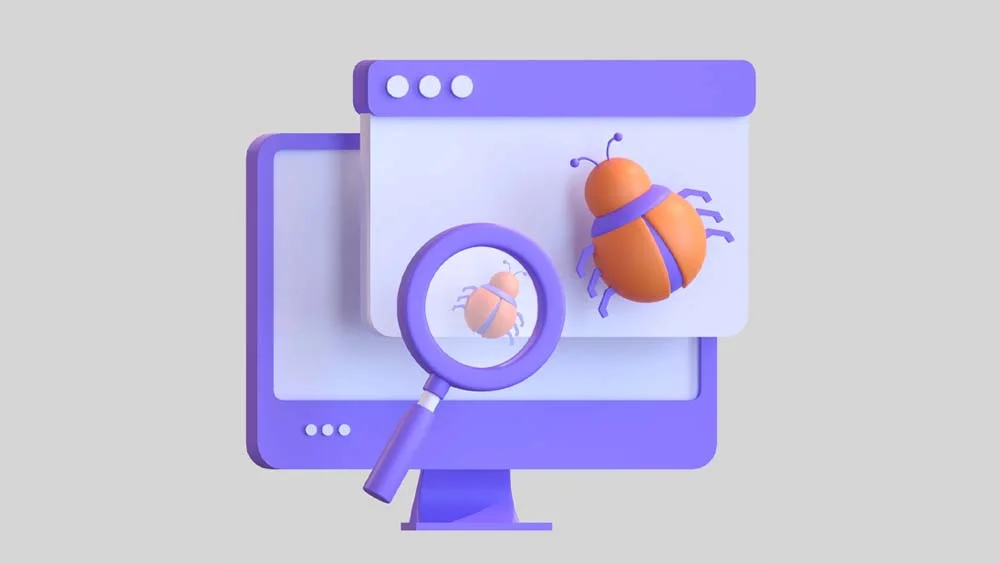We always aspire to have the best version of anything we create. That is why we guarantee to use the best tools. Ones that will help us achieve the level of perfection we seek. If it is your aim to create certain software, then make sure you create something people will see as seamless. This is exactly why we’re creating this ultimate guide. To help you get to know software design best practices, what they are exactly, and how to implement them.
Software design is a crucial aspect of creating high-quality software that meets user needs and expectations. In this ultimate guide, we’ll cover the best practices for software design. Including tips for creating scalable, maintainable, and efficient code. Whether you’re a beginner or an experienced developer, these tips will help you improve your software design skills. Moreover, create better software.
What Is a Software Design?
Let’s start with the basics. Software design is the process by which a developer generates a specification of a software artifact. Developers design it to accomplish goals by employing a set of alternative or basic components and being subject to restrictions. This process takes place within the software development life cycle (SDLC). The specifications that a developer sets are what we call software patterns. Below, we will be discussing what software patterns are and how you can use them or implement them effectively in a software design strategy.
Software Design Patterns: A Quick Overview
Software Design Patterns are reusable solutions to problems that arise during the process of developing software. On the other hand, a Software Design Pattern is not coded; instead, it is a guide or concept that helps software engineers. It helps them build products that adhere to industry standards. A Design Pattern, in contrast to a framework or a library that can be immediately added to a project. Additionally, put to use, functions more like a model for approaching the problem at hand. Design Patterns, which are based on the concepts of items. Like (instances of a type; data with unique properties) and classes (user-defined categories of data). Provide a foundation for object-oriented programming (OOP), which is a style of computer programming.
Design Patterns are a type of blueprint that can be used to solve common problems that arise in software engineering. They offer a method that can be replicated as a solution for a few of the most common challenges that you will face. Having said that, Design Patterns are not a full solution, nor are the code, classes, or libraries that you may use in your project. Rather, they are a collection of patterns that can be used in a variety of situations. They belong to the category of solutions that are used to fix problems. Every job will require a slightly different strategy to be implemented.
Why Should You Learn Software Design Best Practices?
As a programmer, you may use Software Design Patterns to assist you in constructing systems that are more reliable. Design Patterns equip you with the knowledge and skills necessary to develop intelligent and interactive applications. Maybe even software using straightforward and uncomplicated approaches to problem-solving. In addition, they enable you to design the most user-friendly applications and modify them easily so that they conform to the most recent standards. Dealing with design patterns is interesting because having this knowledge enables flexible coding patterns and structural strategies, reusable codes, loosely written codes, classes, patterns, and so on. This makes dealing with design patterns an intriguing topic.
Software Design Best Practices: Detailed Steps, Tips, and Tricks!
Creating a software system that is durable, scalable, and efficient can be an intimidating task. On the other hand, having an understanding of the fundamental principles and constituents can make the process more workable. That is why we’ll be defining the many types of software design. Additionally, the best practices to help you have a full understanding of the whole software design concept.
Types of Design Patterns
The three basic categories of software design patterns are creational, structural, and behavioral.
- Creational patterns: These patterns concentrate on methods for producing objects and offer adaptable, reusable means of doing so. The Singleton pattern, Factory pattern, and Builder pattern are among examples.
- Structural Patterns: This type of pattern deals with Class and object composition. Which help create larger structures while maintaining their flexibility and efficiency. This group includes patterns like Adapter, Decorator, and Composite.
- Behavioral patterns: control how objects interact with one another and how responsibilities are assigned. They make it possible for objects to cooperate and communicate with one another, simplifying the execution of sophisticated algorithms and control flow. Examples include the Command, Strategy, and Observer patterns—my personal favorites.
The Advantages of Software Design Patterns
People literally write books trying to sell you the idea of a design pattern and why it could be the fitting cake topping you always needed in your development strategy but didn’t know you had to have it that much. However, there are actual benefits that I will give top priority to and mention gradually for you to better know.
Software Design Patterns: Enhance Readability and Maintain Your Coding
Readability and maintainability of source code are of the utmost importance in the field of software development. Developers benefit from an increase in both readability and ease of comprehension of their code when they use software design patterns because these patterns provide a clear and organized way to resolve typical programming issues. Developers are able to produce code that is compliant with best practices when they follow established patterns. This results in less complicated code that is also easier to maintain. Design patterns provide a common vocabulary and a set of principles that make it easier to onboard new developers to a project. They also make it easier for members of the team to collaborate with one another.
Promotes Scalability and Code Reuse
The priority that software design patterns place on the reusability of code is one of the most important reasons to use them. Design patterns contain reusable solutions to common design problems. This enables developers to make use of previous patterns rather than having to start from scratch. This not only helps save time and effort, but it also ensures that a project or organization maintains a code architecture that is consistent throughout.
In addition to this, design patterns provide for the scalability of code by offering structures that are flexible and extendable. Design patterns are useful because they allow for changes to be made to the requirements of a system with the minimum effect on the code that is already in place. This makes it simpler to modify and extend software programs.
Facilitates Team Collaboration and Productivity
Design patterns make it easier for developers to communicate and collaborate, which increases the amount of work that a group can complete.
Developers are able to interact more efficiently with one another when they adhere to previously established patterns, as patterns provide a common knowledge of the structure and behavior of the code. Because of this shared knowledge, teamwork is improved, the number of misunderstandings that occur is decreased, and developers are able to work more efficiently together on a project.
Additionally, design patterns promote flexible and component-based development, which enables teams to work on different sections of a system simultaneously, resulting in an increase in overall productivity. This is one of the many benefits of design patterns.
Simplifies, Resolves Issues, and Fixes Bugs!
When problems occur within software applications, finding and addressing bugs can become challenging and time-consuming processes.
Nevertheless, if they are applied correctly, design patterns have the potential to make the process easier. Design patterns encourage separation and modularity of code, which makes it simpler to locate and isolate problematic portions of a program.Developers are able to detect faults more efficiently, apply improvements directly without impacting the system as a whole, and maintain a high level of code stability when well-defined patterns are in place.
When software design patterns are incorporated into the development process, numerous benefits are realized. These benefits range from greater collaboration and simplified problem resolution to enhanced code readability and maintainability. Developers are able to construct reliable, scalable, and sustainable software systems that are up-to-date with the ever-evolving requirements of the industry by leveraging these tried and tested methods.
Software Design Best Practices: Know What You’ve Been Missing!
It is essential to grasp the concept that patterns are not magic in order to properly utilize them. If you don’t apply them correctly, they won’t magically solve all of your issues for you. Before choosing one or more particular patterns, let’s take a look at a few of the best practices you need to keep in mind so we can narrow down our options.
Finding the Right Design Patterns via Analysis
When working with software design patterns, it is essential to first assess the issue at hand and determine which design pattern will be the most effective solution. Avoid applying patterns mindlessly without first comprehending their function and the repercussions of doing so.
Before deciding on a design pattern, it is important to give careful consideration to the particular requirements, restrictions, and characteristics of your project. Carry out in-depth research, as well as consult pattern books or catalogs. You should, if at all possible, consult with other developers who have more experience than you do in order to guarantee that the pattern you select is the most suitable one that meets the requirements of your project.
Apply Design Patterns in a Flexible, Hassle-Free Manner
The most successful applications of design patterns are those that are simple and flexible in nature. Aim to build your system comprised of components that are only loosely related to one another and that can be quickly modified or replaced without affecting the rest of the system. Make sure that each component has a clear responsibility and that it communicates with other components using well-defined interfaces (there are patterns that can help with this as well!).
You can improve the flexibility, maintainability, and testability of your software by adhering to the Single Responsibility Principle and the Dependency Inversion Principle. These two principles are sometimes referred to as SRP and DI, respectively.
Keeping a Record of Design Patterns and How They Are Used
When it comes to realizing the benefits of design patterns, documentation is a very important factor. Develop documentation that is coherent and brief. Furthermore, make sure it describes the function, structure, and application of each design pattern you have in your software. Developers should document design patterns so that they can better comprehend the reasoning behind each pattern. Furthermore, receive direction on how to make appropriate use of them.
Keep in mind that even if a pattern has behavior that all developers can understand, the moment you apply it to your own domain, you lose some of that comprehension. This is true even if all developers are aware of the pattern’s behavior. Those who come after you will have an easier time understanding your aim and the fundamentals of how you applied the pattern if you provide the appropriate documentation in conjunction with the implementation.
Additionally, we recommend that you think about using diagrams, illustrations, and code snippets. That is to illustrate the application of design patterns. This will make the patterns more accessible and understandable to other developers.
Review the Code of Your Patterns Regularly: Update, Update, and oh, Update!
Design patterns should progress alongside the development of software systems as they mature. Review and update your software on a regular basis to ensure that the design patterns you use will continue to be successful and relevant.
As the requirements of your project evolve, you may find that patterns that were once appropriate are no longer appropriate or are no longer necessary.
Refactoring code with design patterns helps maintain a clean and clear codebase, prevents the misuse or overuse of design patterns, and ensures that design patterns continue to fulfill the reasons for which they were originally designed.
App Development: Software Patterns, Tips, and Tricks!
I promise you that this article has an end. Bear with me if you will. Before we jump to our conclusion, though, here are some tips and tricks for software design best practices in app development:
Understand the User and Their Needs
One of the most important aspects of software design is understanding the user and their needs. Before you start designing your software, take the time to research and understand your target audience. What are their pain points, features do they need, and their expectations for the software? By understanding the user and their needs, you can create software that meets their expectations and provides a positive user experience. Consider conducting user interviews, surveys, and usability testing to gather feedback and insights from your target audience
No One Likes Complications; Keep It Simple!
When it comes to the design of software, simplicity and intuitiveness are two of the most important factors. It should not be difficult for users to navigate and comprehend the software; they should not feel overwhelmed or bewildered. Stay away from interfaces that are too cluttered, have too many features, and have workflows that are too convoluted.
Instead, you should concentrate on developing a design that is uncluttered, easy to use, and gives top billing to the most essential functions and responsibilities. When guiding users through the product, utilize language that is clear and succinct, along with icons that are intuitive and navigation that is logical. Keep in mind that the objective is to make the user’s experience as seamless and uncomplicated as humanly possible.
Prioritize Functionality and Performance
While aesthetics are important in software design, functionality and performance should always be the top priorities. I know how we love to implement aesthetics in our daily lives and how people are all about achieving their aesthetics to a certain level nowadays. However, your software should be designed to meet the needs of your users and perform its intended functions efficiently and effectively.
This means conducting thorough testing and debugging to ensure that your software is reliable and performs well under different conditions. Additionally, you should prioritize user feedback and make necessary improvements to enhance the functionality and performance of your software.
Final Thoughts: Congratulations! You Made It This Far
Okay, so now that you’re here, I won’t make this long.
Software design patterns bring elegance and structure to the chaotic world of software development. These architectural blueprints help developers move from chaotic code to maintainable masterpieces. If this sounds poetic enough for you, let’s talk business.
Our no-code native app builder, nandbox, allows you to create seamless apps at the speed of a human blinking a light year. Too much exaggeration? apologies. We offer you the ability to save money, time, and effort. That is, through creating an app using customizable pre-made templates and a very simple drag-and-drop interface. Sign up now for our native no-code app builder nandbox. As we will help you empower your business with an app that doesn’t need any coding hassles to build!








